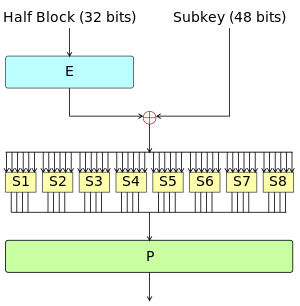Portal:Telecommunication
The Telecommunication Portal

Telecommunication, often used in its plural form, is the transmission of information with an immediacy comparable to face-to-face communication. As such, slow communications technologies like postal mail and pneumatic tubes are excluded from the definition. Many transmission media have been used for telecommunications throughout history, from smoke signals, beacons, semaphore telegraphs, signal flags, and optical heliographs to wires and empty space made to carry electromagnetic signals. These paths of transmission may be divided into communication channels for multiplexing, allowing for a single medium to transmit several concurrent communication sessions. Several methods of long-distance communication before the modern era used sounds like coded drumbeats, the blowing of horns, and whistles. Long-distance technologies invented during the 20th and 21st centuries generally use electric power, and include the telegraph, telephone, television, and radio.
Early telecommunication networks used metal wires as the medium for transmitting signals. These networks were used for telegraphy and telephony for many decades. In the first decade of the 20th century, a revolution in wireless communication began with breakthroughs including those made in radio communications by Guglielmo Marconi, who won the 1909 Nobel Prize in Physics. Other early pioneers in electrical and electronic telecommunications include co-inventors of the telegraph Charles Wheatstone and Samuel Morse, numerous inventors and developers of the telephone including Antonio Meucci and Alexander Graham Bell, inventors of radio Edwin Armstrong and Lee de Forest, as well as inventors of television like Vladimir K. Zworykin, John Logie Baird and Philo Farnsworth.
Since the 1960s, the proliferation of digital technologies has meant that voice communications have gradually been supplemented by data. The physical limitations of metallic media prompted the development of optical fibre. The Internet, a technology independent of any given medium, has provided global access to services for individual users and further reduced location and time limitations on communications. (Full article...)
Selected article -
The Data Encryption Standard (DES /ˌdiːˌiːˈɛs, dɛz/) is a symmetric-key algorithm for the encryption of digital data. Although its short key length of 56 bits makes it too insecure for modern applications, it has been highly influential in the advancement of cryptography.
Developed in the early 1970s at IBM and based on an earlier design by Horst Feistel, the algorithm was submitted to the National Bureau of Standards (NBS) following the agency's invitation to propose a candidate for the protection of sensitive, unclassified electronic government data. In 1976, after consultation with the National Security Agency (NSA), the NBS selected a slightly modified version (strengthened against differential cryptanalysis, but weakened against brute-force attacks), which was published as an official Federal Information Processing Standard (FIPS) for the United States in 1977. (Full article...)General images
Things to do
 |
Here are some tasks awaiting attention:
|
Selected biography -
John Logie Baird FRSE (/ˈloʊɡi bɛərd/; 13 August 1888 – 14 June 1946) was a Scottish inventor, electrical engineer, and innovator who demonstrated the world's first live working television system on 26 January 1926. He went on to invent the first publicly demonstrated colour television system and the first viable purely electronic colour television picture tube.
In 1928 the Baird Television Development Company achieved the first transatlantic television transmission. Baird's early technological successes and his role in the practical introduction of broadcast television for home entertainment have earned him a prominent place in television's history. (Full article...)Did you know (auto-generated) -

- ... that two state representatives got into a fight in the parking lot of Miami's Radio Mambí after one's father insulted the other's on the air?
- ... that an Illinois radio station closed down to reduce interference with television reception?
- ... that a former radio host got a free apartment in New York City's King Manor and lived there for more than three decades?
- ... that Kid Canfield is the first known person to die live on radio?
- ... that a jury awarded $225,000 to the prospective owners of Florida radio station WODX because of poor record-keeping and breaches of their lease agreement?
- ... that Adele reduced the length of "I Drink Wine" from fifteen to six minutes because her label thought that no one would play a fifteen-minute song on the radio?
Related portals
Topics
Subcategories
Associated Wikimedia
The following Wikimedia Foundation sister projects provide more on this subject:
-
Commons
Free media repository -
Wikibooks
Free textbooks and manuals -
Wikidata
Free knowledge base -
Wikinews
Free-content news -
Wikiquote
Collection of quotations -
Wikisource
Free-content library -
Wikiversity
Free learning tools -
Wiktionary
Dictionary and thesaurus





























































































